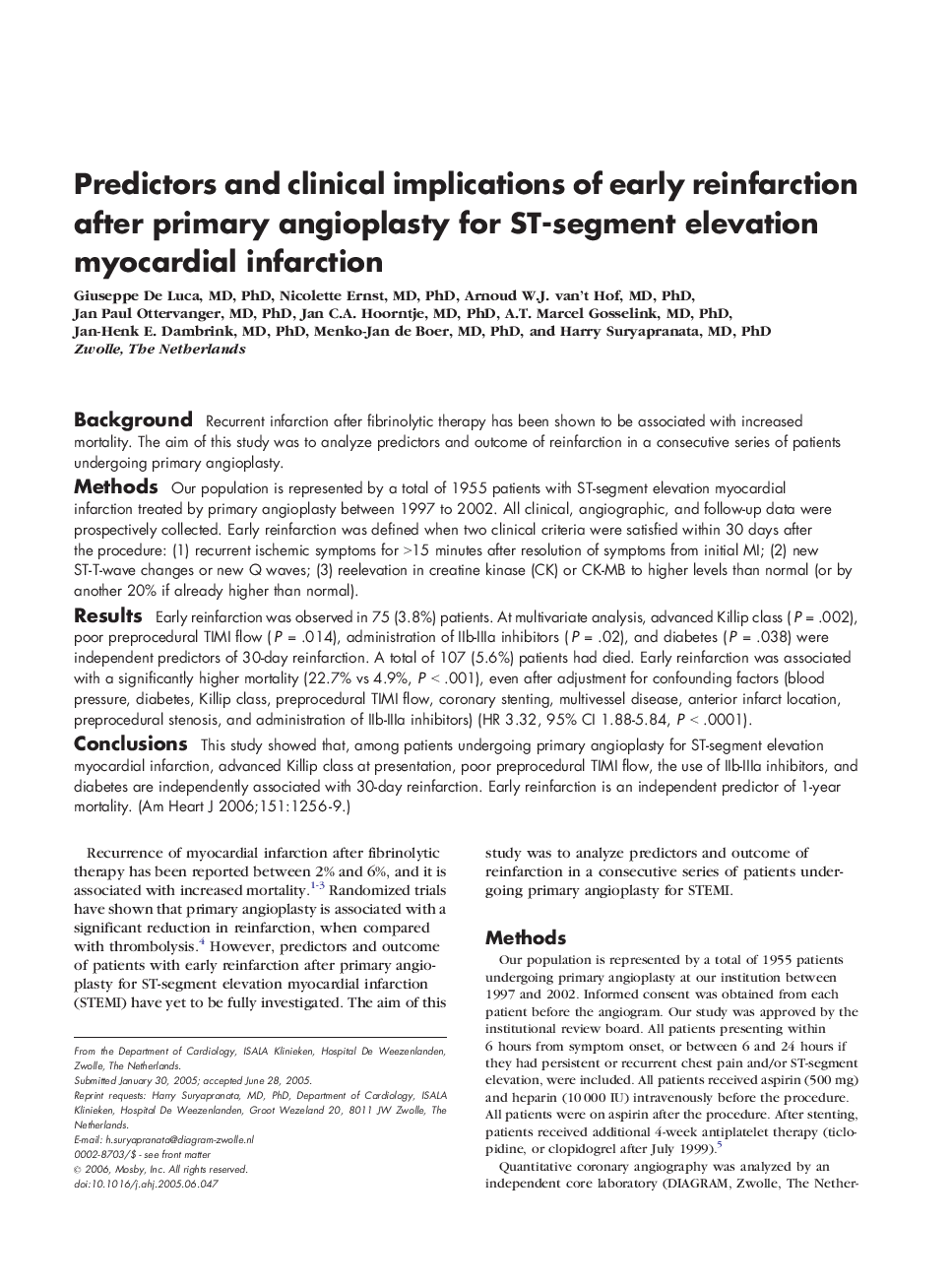| Article ID | Journal | Published Year | Pages | File Type |
|---|---|---|---|---|
| 2851982 | American Heart Journal | 2006 | 4 Pages |
BackgroundRecurrent infarction after fibrinolytic therapy has been shown to be associated with increased mortality. The aim of this study was to analyze predictors and outcome of reinfarction in a consecutive series of patients undergoing primary angioplasty.MethodsOur population is represented by a total of 1955 patients with ST-segment elevation myocardial infarction treated by primary angioplasty between 1997 to 2002. All clinical, angiographic, and follow-up data were prospectively collected. Early reinfarction was defined when two clinical criteria were satisfied within 30 days after the procedure: (1) recurrent ischemic symptoms for >15 minutes after resolution of symptoms from initial MI; (2) new ST-T-wave changes or new Q waves; (3) reelevation in creatine kinase (CK) or CK-MB to higher levels than normal (or by another 20% if already higher than normal).ResultsEarly reinfarction was observed in 75 (3.8%) patients. At multivariate analysis, advanced Killip class (P = .002), poor preprocedural TIMI flow (P = .014), administration of IIb-IIIa inhibitors (P = .02), and diabetes (P = .038) were independent predictors of 30-day reinfarction. A total of 107 (5.6%) patients had died. Early reinfarction was associated with a significantly higher mortality (22.7% vs 4.9%, P < .001), even after adjustment for confounding factors (blood pressure, diabetes, Killip class, preprocedural TIMI flow, coronary stenting, multivessel disease, anterior infarct location, preprocedural stenosis, and administration of IIb-IIIa inhibitors) (HR 3.32, 95% CI 1.88-5.84, P < .0001).ConclusionsThis study showed that, among patients undergoing primary angioplasty for ST-segment elevation myocardial infarction, advanced Killip class at presentation, poor preprocedural TIMI flow, the use of IIb-IIIa inhibitors, and diabetes are independently associated with 30-day reinfarction. Early reinfarction is an independent predictor of 1-year mortality.
